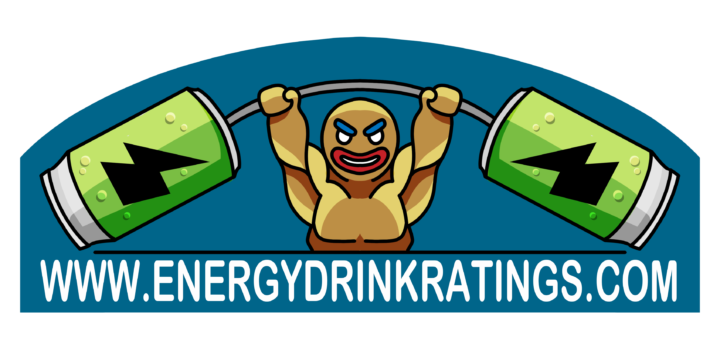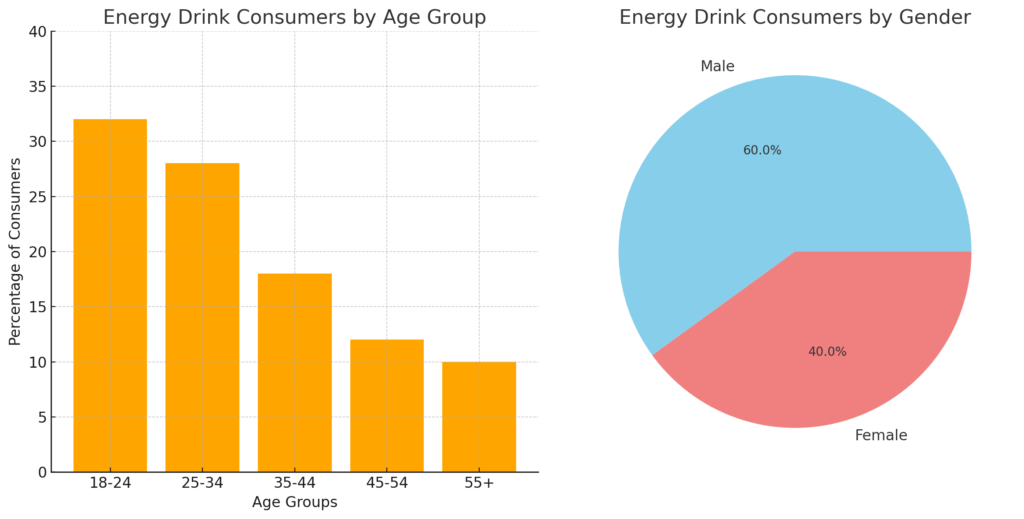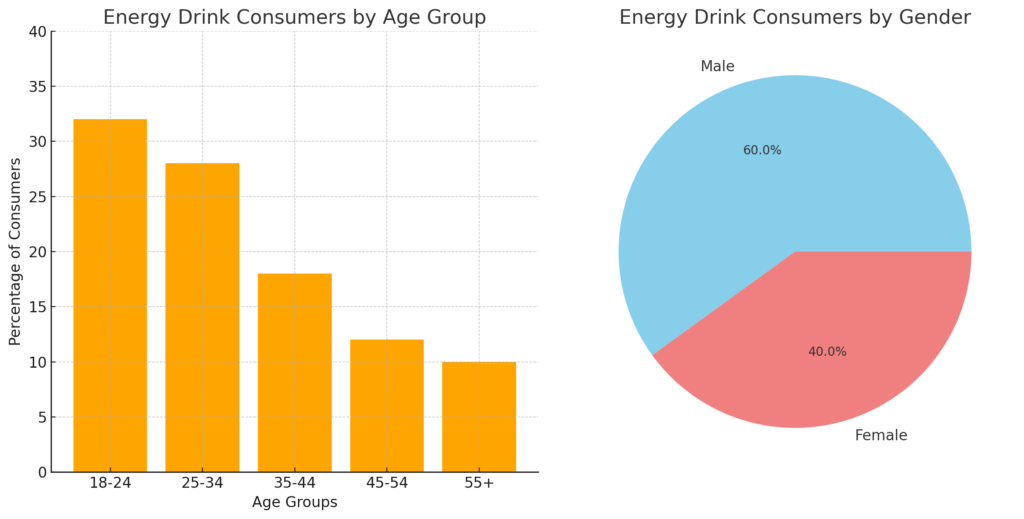
Energy drinks have become a booming industry, with global sales reaching billions of dollars annually. From athletes looking for a performance boost to professionals needing extra focus, these beverages have captivated several consumer groups.
However, a deeper look into who exactly is consuming these drinks reveals intriguing patterns across age, gender, lifestyle, and cultural backgrounds. Together, we’ll analyze the demographic profile of energy drink consumers and explore the influences driving their consumption.
Energy drink consumption is largely driven by younger age groups. According to research, people between the ages of 18 and 34 are the primary consumers of energy drinks. This demographic is drawn to the quick energy boost provided by these beverages, often using them to keep up with demanding schedules, whether it’s attending school, juggling work and social activities, or pulling all-nighters. The college-age group, in particular, has become a significant market for energy drink brands.
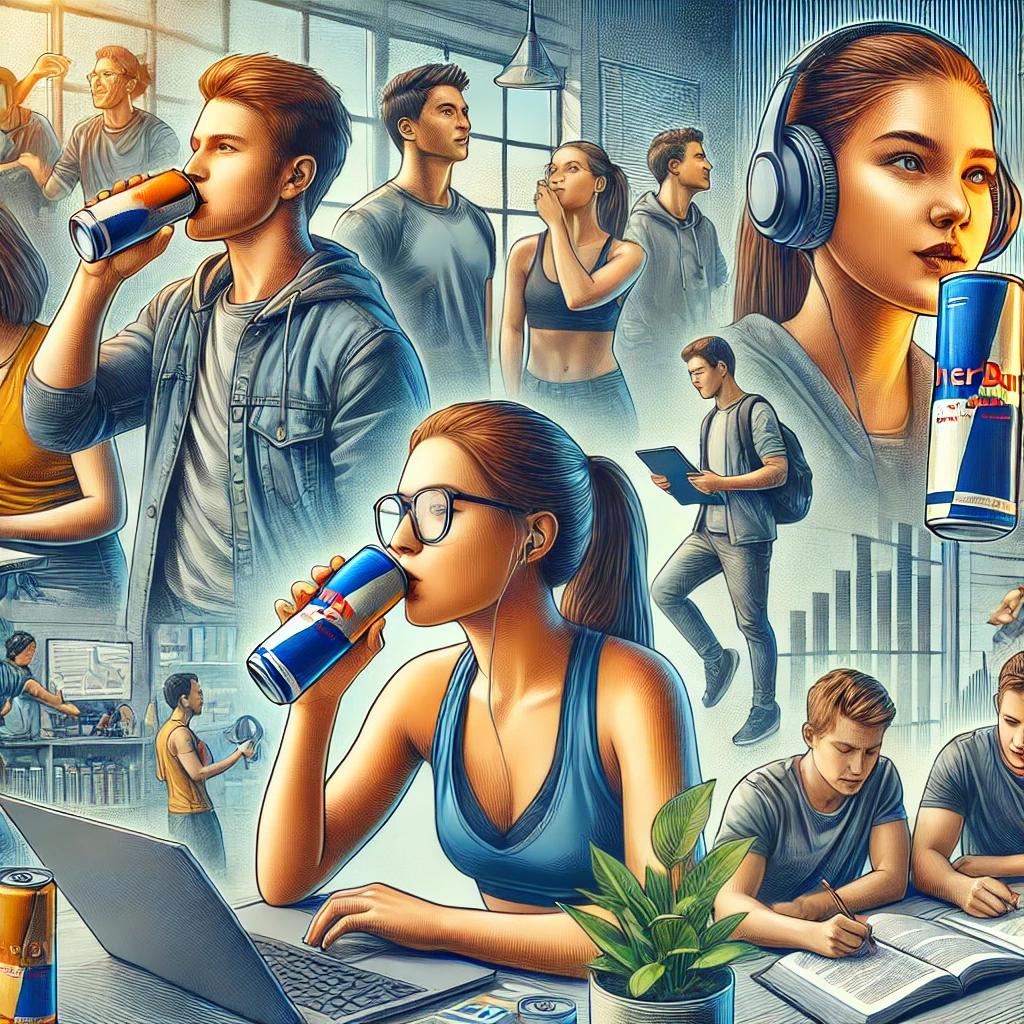
The fast-paced lifestyle of young adults creates the need for products that can enhance their productivity and energy levels. Energy drinks offer a quick fix for students preparing for exams or cramming assignments at the last minute. Younger adults often engage in more social activities where energy drinks are promoted. For example, energy drinks are commonly mixed with alcohol at parties, which may increase their consumption among this age group, despite potential health risks.
However, younger consumers aren’t just turning to energy drinks for academic or professional reasons. The sense of adventure and thrill-seeking commonly associated with youth also plays a role in their consumption habits. Many energy drink brands market their products with themes of extreme sports, excitement, and living life on the edge. Red Bull, for example, often sponsors extreme sports events, which appeals to a younger audience looking for excitement and physical challenges.
Interestingly, studies show that energy drink consumption tends to decline after age 35. This could be attributed to changes in lifestyle and energy requirements as people age. Adults in their mid-30s and older may rely on other methods, such as coffee or healthier alternatives, to maintain their energy levels.

When analyzing the energy drink consumer base, it becomes clear that men significantly outnumber women. In fact, men account for nearly 60% of energy drink consumers. There are a few reasons why men are more likely to consume energy drinks than women.
First off, the marketing strategies employed by energy drink companies often target men. The advertisements frequently feature high-adrenaline activities such as extreme sports, car racing, or action-packed events, appealing to masculine ideals of strength, endurance, and fearlessness. The images and language used in energy drink advertising reinforce these messages, making them more attractive to men. Brands like Monster and Red Bull often sponsor events like motocross and skateboarding competitions, further solidifying their appeal to a male audience.
Secondly, men tend to engage in more sports or manual labor jobs, where they may feel a need for energy drinks to maintain their stamina. Research indicates that male athletes and fitness enthusiasts are among the highest consumers of energy drinks, using them to enhance their physical performance and endurance. Energy drinks often claim to improve focus, alertness, and physical power, making them very attractive to individuals participating in these types of activities.
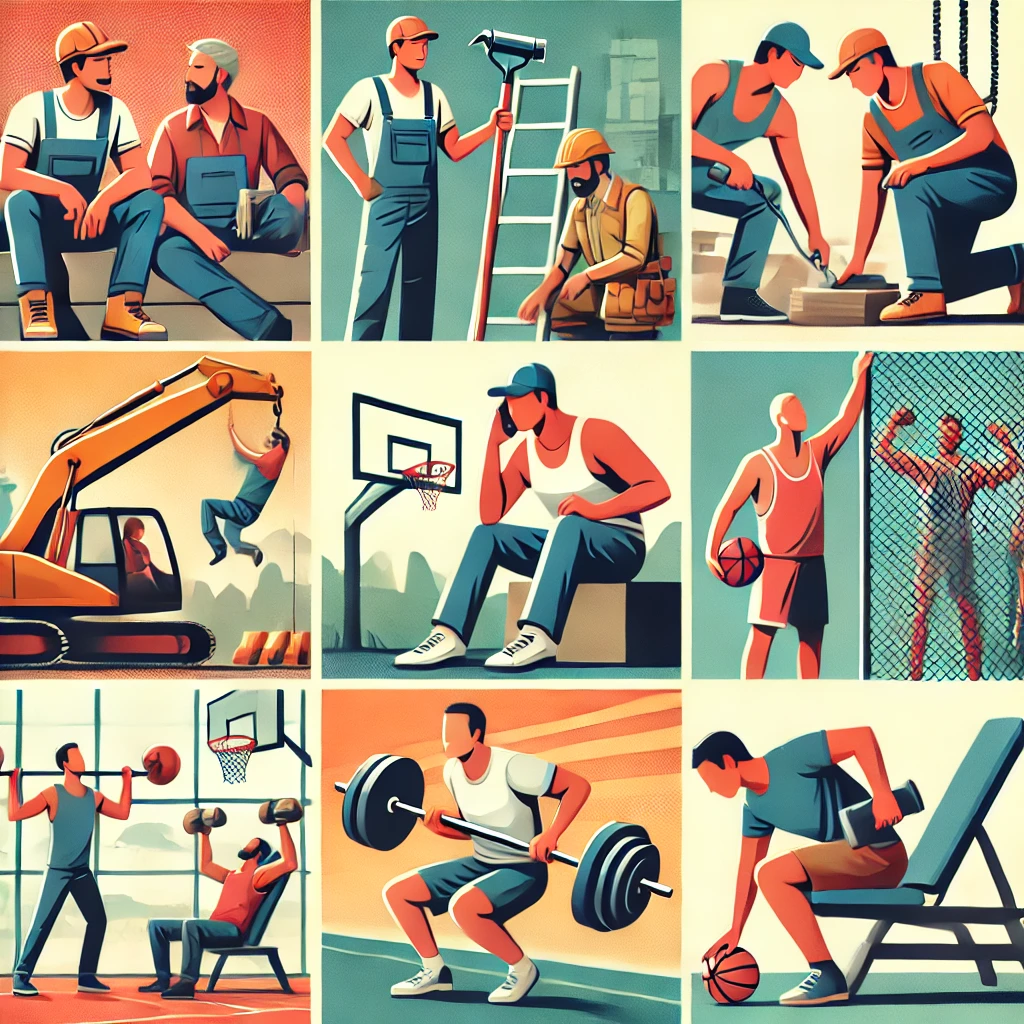
That said, the gap between male and female consumers is slowly narrowing as energy drink companies diversify their product lines and marketing efforts. There has been a noticeable shift towards promoting energy drinks for professional women, students, and those seeking a healthier lifestyle. Some brands are even introducing low-calorie or “clean” energy drinks to appeal to health-conscious female consumers. The rise of fitness culture among women has also contributed to increased consumption of energy drinks, as more women turn to these beverages to support their workouts and busy schedules.
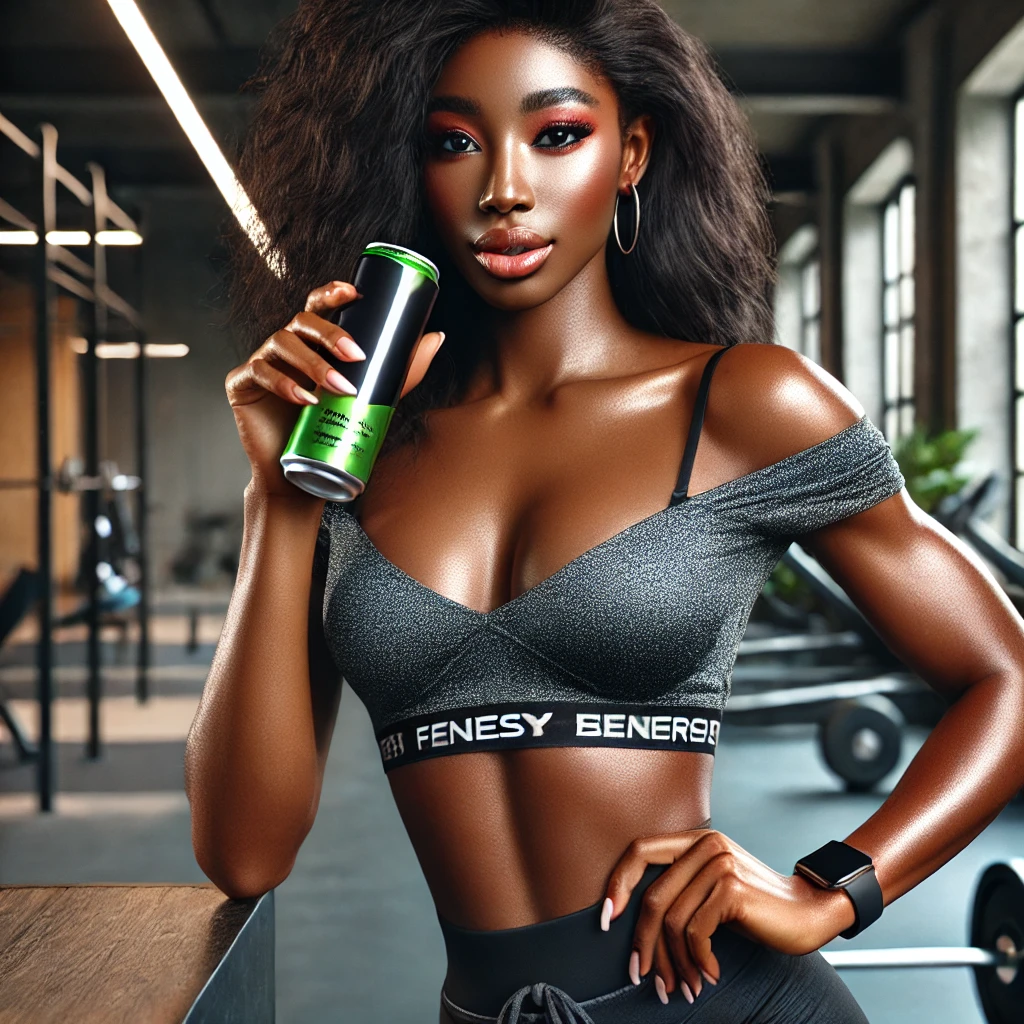
The appeal of energy drinks goes beyond age and gender; lifestyle factors also play a significant role in determining who consumes these products. Several consumer groups have emerged as key energy drink markets, driven by their need for quick energy and mental alertness.
- Athletes and Fitness Enthusiasts
A large portion of energy drink consumers consists of athletes and fitness enthusiasts. These individuals turn to energy drinks to fuel their workouts and enhance their performance. For athletes, energy drinks offer a way to maintain high levels of energy and focus during intense training sessions or competitions. Additionally, energy drinks are often marketed with claims of improved physical stamina and recovery, which resonates with those who are serious about their fitness routines.
Sports drinks and energy drinks are often confused, but there is a distinct difference between them. Sports drinks like Gatorade and Powerade are designed to replenish electrolytes lost during physical activity, whereas energy drinks typically contain caffeine, sugar, and other stimulants intended to boost energy levels. Athletes may use both, depending on their needs, but energy drinks are particularly popular before high-intensity workouts to increase endurance and alertness.
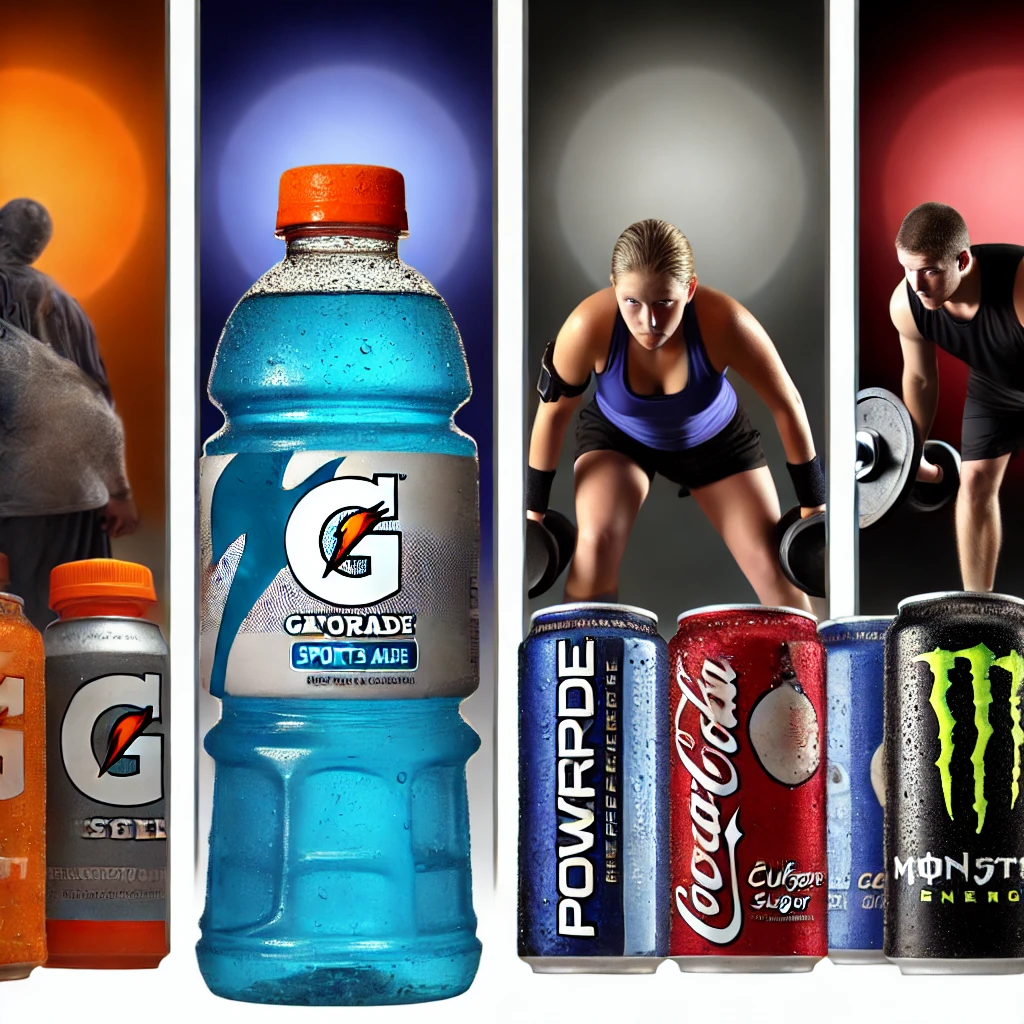
- Professionals with Demanding Jobs
Energy drinks are also favored by individuals with demanding or unconventional work schedules. Professions that require extended hours of concentration, such as those in law, medicine, or finance, may lead workers to rely on energy drinks to maintain their productivity throughout long shifts. Night shift workers, in particular, often turn to energy drinks to help fight fatigue and stay alert during odd hours.
Studies show that shift workers, especially those in fields like healthcare, emergency services, and transportation, are among the most frequent consumers of energy drinks. The need to stay awake and focused for extended periods, especially during nighttime hours, drives the demand for these beverages. This makes energy drinks a convenient solution for those who struggle with maintaining consistent energy levels throughout irregular work schedules.

- Students and Academics
As mentioned earlier, students are a major demographic for energy drinks. With academic pressures at an all-time high, students often use energy drinks as a quick fix to power through study sessions or meet deadlines. The caffeine and sugar in energy drinks can provide the necessary boost to focus and remain productive during late nights.
However, this demographic may also face health concerns related to overconsumption. Drinking energy drinks in large quantities can lead to issues like insomnia, heart palpitations, and anxiety, particularly when combined with other stimulants like caffeine from coffee. Despite these risks, students continue to consume energy drinks regularly, attracted by their effectiveness in providing short-term energy boosts.

Energy drink consumption also varies depending on cultural and regional factors. In the United States, the energy drink market is among the largest in the world, with major brands like Red Bull, Monster, and Rockstar leading the charge. However, energy drinks have gained traction globally, with significant markets in Europe and Asia as well.
In Asia, energy drinks have long been associated with work culture. Countries like Japan and South Korea, known for their intense work environments, have embraced energy drinks as a way to maintain productivity during long hours in the office. In Japan, energy drinks like Lipovitan D have been popular since the 1960s, well before the global energy drink boom led by Western brands.
In Europe, energy drinks are also widely consumed, with Austria being the home of Red Bull, one of the most iconic brands in the world. European consumers tend to be more health-conscious, leading to an increase in demand for sugar-free and low-calorie versions of energy drinks. This is in line with broader global trends, as more consumers shift toward healthier options that still provide the energy-boosting effects of traditional energy drinks.
Studies indicate that Caucasians tend to consume energy drinks at higher rates compared to other ethnicities, but the gap is narrowing as marketing becomes more inclusive. Hispanic and African American consumers are increasingly becoming a target audience for energy drink companies, especially as urban youth and fitness-focused individuals in these groups turn to energy drinks for quick energy boosts. Asian Americans also represent a growing segment, particularly in metropolitan areas where energy drinks are marketed as tools for productivity and mental focus.
As energy drinks continue to grow in popularity, health concerns surrounding their consumption have come to the forefront. The high caffeine and sugar content in many energy drinks have raised concerns among health professionals, particularly when these drinks are consumed in large quantities or mixed with alcohol.
Studies have shown that consuming energy drinks can lead to side effects like increased heart rate, elevated blood pressure, and sleep disturbances. Over time, excessive energy drink consumption may contribute to more serious health problems, such as heart disease or metabolic disorders. In response, some governments have introduced regulations on energy drink marketing and sales. For example, certain countries have placed age restrictions on the purchase of energy drinks or limited the amount of caffeine that can be included in each serving.
Despite these concerns, energy drinks remain popular, with many consumers viewing them as an occasional indulgence or a necessary tool for managing their energy levels in today’s fast-paced world. The key for consumers is moderation. Many health experts recommend limiting energy drink consumption to avoid potential health risks, especially for individuals who are sensitive to caffeine or have pre-existing health conditions.
Energy drink companies have become adept at targeting specific niches within their consumer base. For example, Monster’s Ultra line, which features zero-calorie and sugar-free options, is marketed toward health-conscious consumers. This allows them to cater to a broader audience, appealing not just to extreme sports enthusiasts but also to those looking for a clean energy boost.
The packaging of energy drinks also plays a significant role in their appeal. Brightly colored cans and bold, edgy designs are common across brands, designed to stand out on store shelves and convey a sense of excitement. This visual branding reinforces the idea that energy drinks are for people who live fast-paced, active lives.
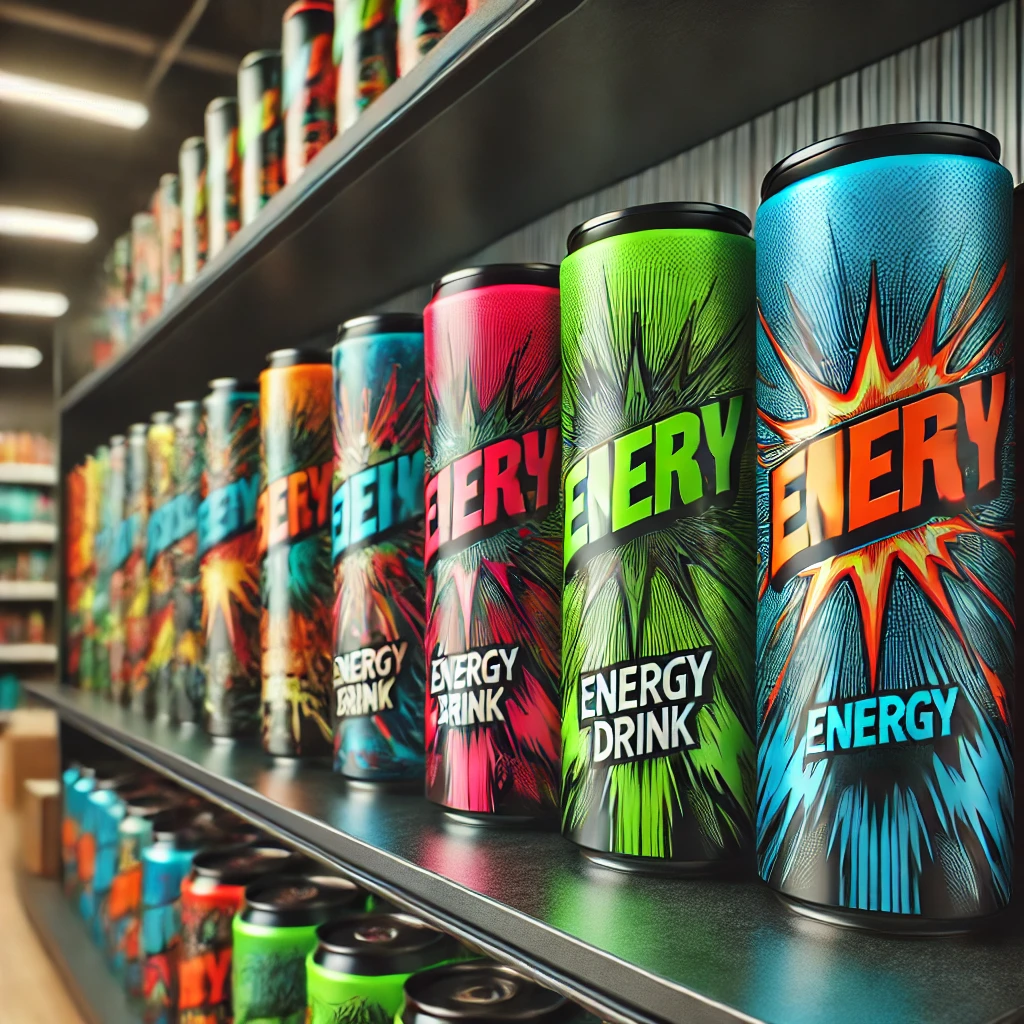
The demographic analysis of energy drink consumers shows that these beverages appeal to a wide range of people, particularly young adults, men, athletes, and those with high-energy lifestyles. However, as the market continues to evolve, energy drink brands are expanding their target audience by introducing products that cater to health-conscious individuals, women, and older consumers.
As awareness of the potential health risks associated with energy drinks grows, consumers are likely to seek out products that offer the same energy-boosting effects without the negative side effects. This shift is already visible in the growing demand for sugar-free and low-calorie energy drinks. Companies that adapt to these changing preferences will be well-positioned for continued success in the competitive energy drink market.
While energy drinks will continue to play a prominent role in today’s fast-paced society, moderation and informed choices will be key to ensuring that consumers can enjoy these beverages safely. Brands must also navigate the challenges of balancing consumer demand for quick energy boosts with increasing health concerns, as they seek to expand their reach across diverse demographic groups.
References
- Statista. (2021). Energy drink consumption in the U.S. by age group. Retrieved from Statista.
- Smith, T. (2022). Energy Drink Market Analysis: Who Is Drinking These Beverages?. Healthline. Retrieved from Healthline.
- GlobalData. (2023). Demographics of Energy Drink Consumers. Retrieved from GlobalData.
- Foster, S. (2021). Marketing to Millennials: Why Young Adults Love Energy Drinks. Marketing Dive. Retrieved from Marketing Dive.
- American Heart Association. (2020). The Health Risks of Energy Drinks. Retrieved from AHA Journals.
- Red Bull Official Website. (2022). Extreme Sports Sponsorships: Why Red Bull Invests in Adventure. Retrieved from Red Bull.
